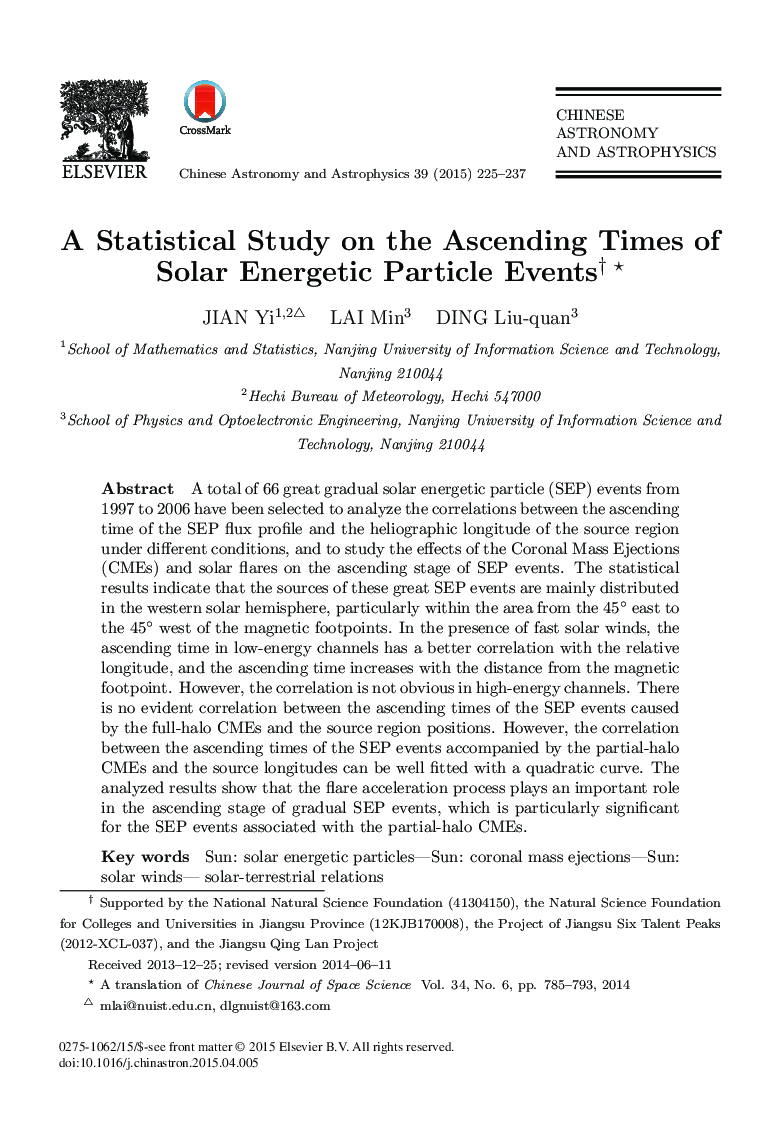| Article ID | Journal | Published Year | Pages | File Type |
|---|---|---|---|---|
| 1771794 | Chinese Astronomy and Astrophysics | 2015 | 13 Pages |
A total of 66 great gradual solar energetic particle (SEP) events from 1997 to 2006 have been selected to analyze the correlations between the ascending time of the SEP flux profile and the heliographic longitude of the source region under different conditions, and to study the effects of the Coronal Mass Ejections (CMEs) and solar flares on the ascending stage of SEP events. The statistical results indicate that the sources of these great SEP events are mainly distributed in the western solar hemisphere, particularly within the area from the 45° east to the 45° west of the magnetic footpoints. In the presence of fast solar winds, the ascending time in low-energy channels has a better correlation with the relative longitude, and the ascending time increases with the distance from the magnetic footpoint. However, the correlation is not obvious in high-energy channels. There is no evident correlation between the ascending times of the SEP events caused by the full-halo CMEs and the source region positions. However, the correlation between the ascending times of the SEP events accompanied by the partial-halo CMEs and the source longitudes can be well fitted with a quadratic curve. The analyzed results show that the flare acceleration process plays an important role in the ascending stage of gradual SEP events, which is particularly significant for the SEP events associated with the partial-halo CMEs.
